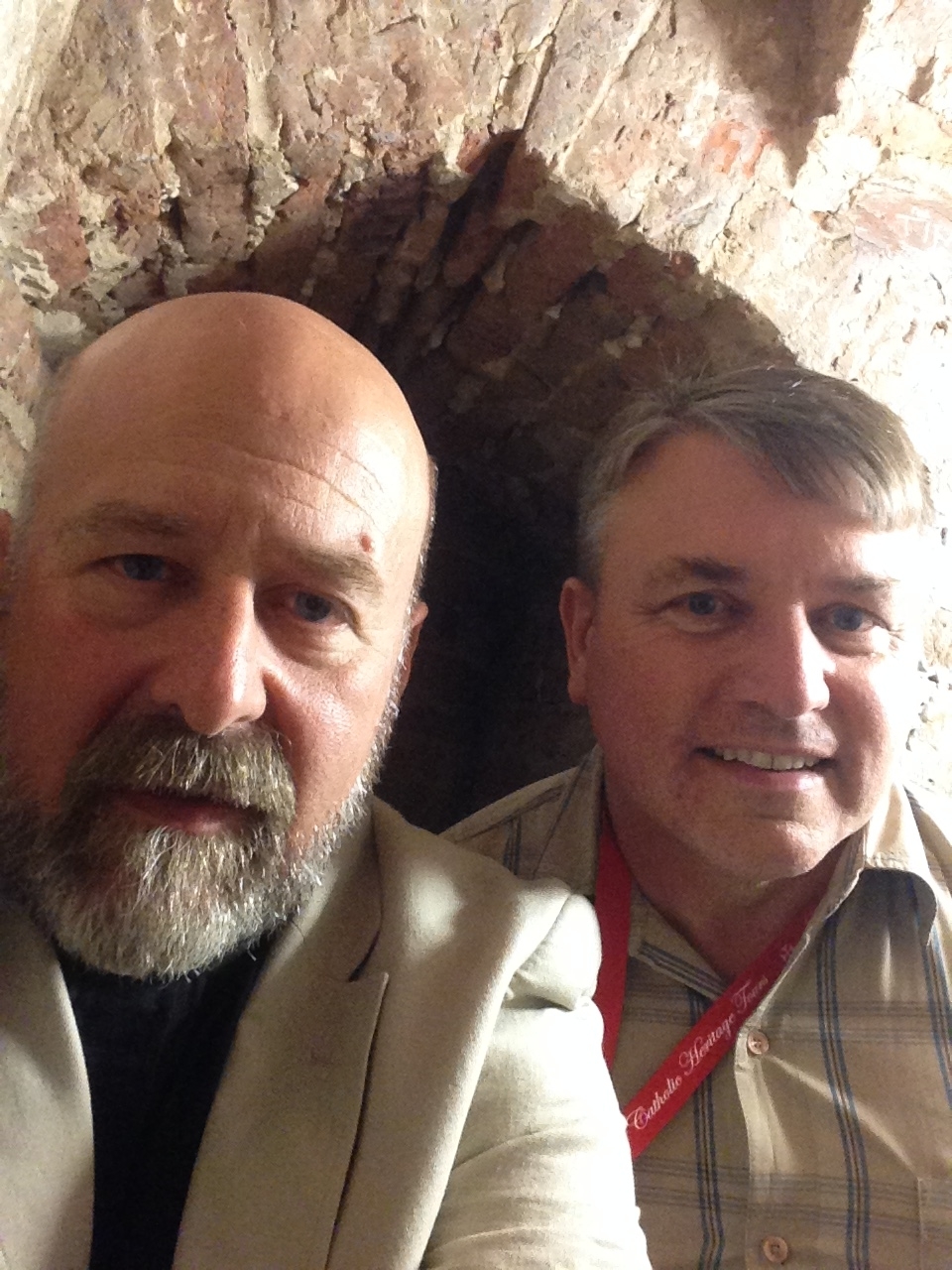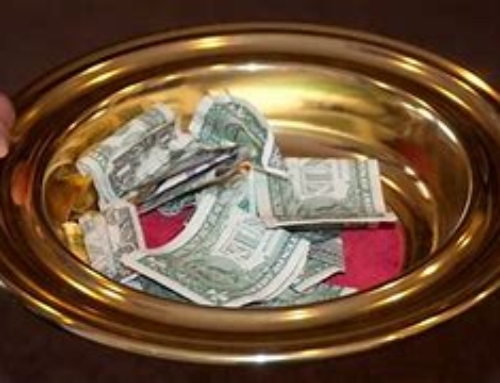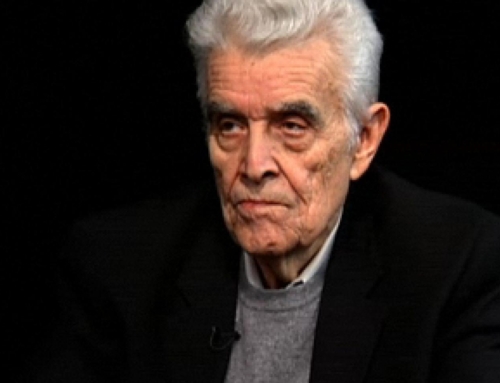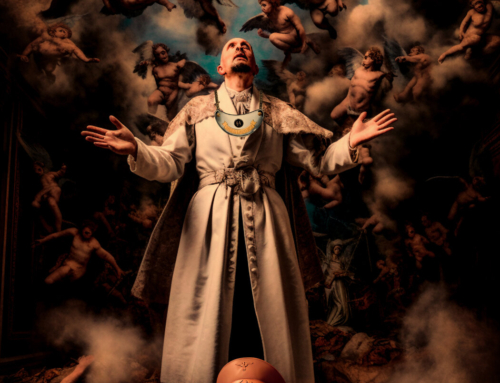
In 2015 my friend Joseph Pearce and I led a memorable pilgrimage to England to pray at the shrines of the English martyrs and the graves of the greatest literary figures. We packed an enormous amount into ten days, and I will always remember Joseph huddling with me in the priest hole at Oxborough Hall and singing the Salve Regina.
One of our visits was to Canterbury Cathedral, and on the bus journey from London I gave a talk on Canterbury’s Three Toms. They are St. Thomas a Becket, St Thomas More, T.S.Eliot and Thomas Cranmer.
How are they linked?
Thomas a Becket was chancellor of England under King Henry II in the twelfth century. As Archbishop he clashed with the King over the rights of the church and the crown and was famously murdered in the cathedral by three knights who thought they were fulfilling the king’s wishes. He was soon declared a saint and his shrine in Canterbury Cathedral was one of the visited shrines of Medieval Europe.
Thomas More was also chancellor of England under a King Henry. This time it was Henry VIII and Thomas More also forfeited his life for resisting the authority of the king over the authority of the church. What does Thomas More have to do with Canterbury? After he was beheaded his daughter Margaret Roper retrieved his head from the spike on which it was placed on London Bridge and the relic is in a special chamber in the church of St Dunstan in Canterbury. Like Thomas Becket, More wore a hair shirt as a penance. The hair shirt is reputedly kept at Buckfast Abbey in Devon.
Henry VIII was so disturbed by the similarities between More and Becket – (both Thomas’ were extremely gifted, both stood up to a King Henry, both were executed at the King’s command, both were pious and uncompromising-)that he had the shrine of St Thomas Becket destroyed and the relics of the saint burnt and dispersed. Likewise, St Thomas More’s body was buried in a common, unmarked grave in the Chapel of St Peter at the Tower of London.
T.S.Eliot? The “T” is for “Thomas”, and Eliot was commissioned in 1935 to write a verse play about Thomas Becket’s murder. Murder in the Cathedral was performed in 1935 in the chapter house of Canterbury Cathedral–just a few yards from the site of Becket’s murder.
Another interesting detail is that just next to the site of Becket’s murder you will find the tomb of William Warham–the last Catholic Archbishop of Canterbury who was replaced by another Thomas, who–despite his treachery in his own way, also died heroically: Thomas Cranmer.
All four Thomas’ are witness to the Catholic church’s constant struggle with the secular power. The secular powers that be know their most potent enemy is the Church. Eliot wrote his play just at the time that the fascist and communist powers were rising in Europe, and the same struggles persist and always will in the world. During our visit to Canterbury we were blessed to also visit the little Catholic church of St Thomas a Becket where a few of his relics can still be found, and I was moved by the fact that the church also holds relics of St Oscar Romero–another Archbishop in another country far away who was also murdered for his defense of the faith in the person of the poor.
And what is a martyr? It is no mistake that the Feast of Stephen the first martyr is followed by the Holy Innocents–the children who die and then St Thomas Becket–who stands for all who die resisting the demonic demands of the bloodthirsty men of grasping greed and callous cruelty, ravaging raping and ravishing the land.
Here is Thomas Becket’s Christmas Sermon from T.S.Eliot’s Murder in the Cathedral
Consider also one thing of which you have probably never thought. Not only do we at the feast of Christmas celebrate at once Our Lord’s Birth and His Death: but on the next day we celebrate the martyrdom of His first martyr, the blessed Stephen. Is it an accident, do you think, that the day of the first martyr follows immediately the day of the Birth of Christ? By no means. Just as we rejoice and mourn at once, in the Birth and in the Passion of Our Lord; so also, in a smaller figure, we both rejoice and mourn in the death of martyrs. We mourn, for the sins of the world that has martyred them; we rejoice, that another soul is numbered among the Saints in Heaven, for the glory of God and for the salvation of men.
Beloved, we do not think of a martyr simply as a good Christian who has been killed because he is a Christian: for that would be solely to mourn. We do not think of him simply as a good Christian who has been elevated to the company of the Saints: for that would be simply to rejoice: and neither our mourning nor our rejoicing is as the world’s is. A Christian martyrdom is no accident. Saints are not made by accident. Still less is a Christian martyrdom the effect of a man’s will to become a Saint, as a man by willing and contriving may become a ruler of men. Ambition fortifies the will of man to become ruler over other men: it operates with deception, cajolery, and violence, it is the action of impurity upon impurity. Not so in Heaven. A martyr, a saint, is always made by the design of God, for His love of men, to warn them and to lead them, to bring them back to His ways. A martyrdom is never the design of man; for the true martyr is he who has become the instrument of God, who has lost his will in the will of God, not lost it but found it, for he has found freedom in submission to God. The martyr no longer desires anything for himself, not even the glory of martyrdom. So thus as on earth the Church mourns and rejoices at once, in a fashion that the world cannot understand; so in Heaven the Saints are most high, having made themselves most low, seeing themselves not as we see them, but in the light of the Godhead from which they draw their being.







There are Colonial houses still standing on the Eastern Shore of Maryland which have Priest hides and hidden altars, remnants persecution of Early Maryland Catholics.